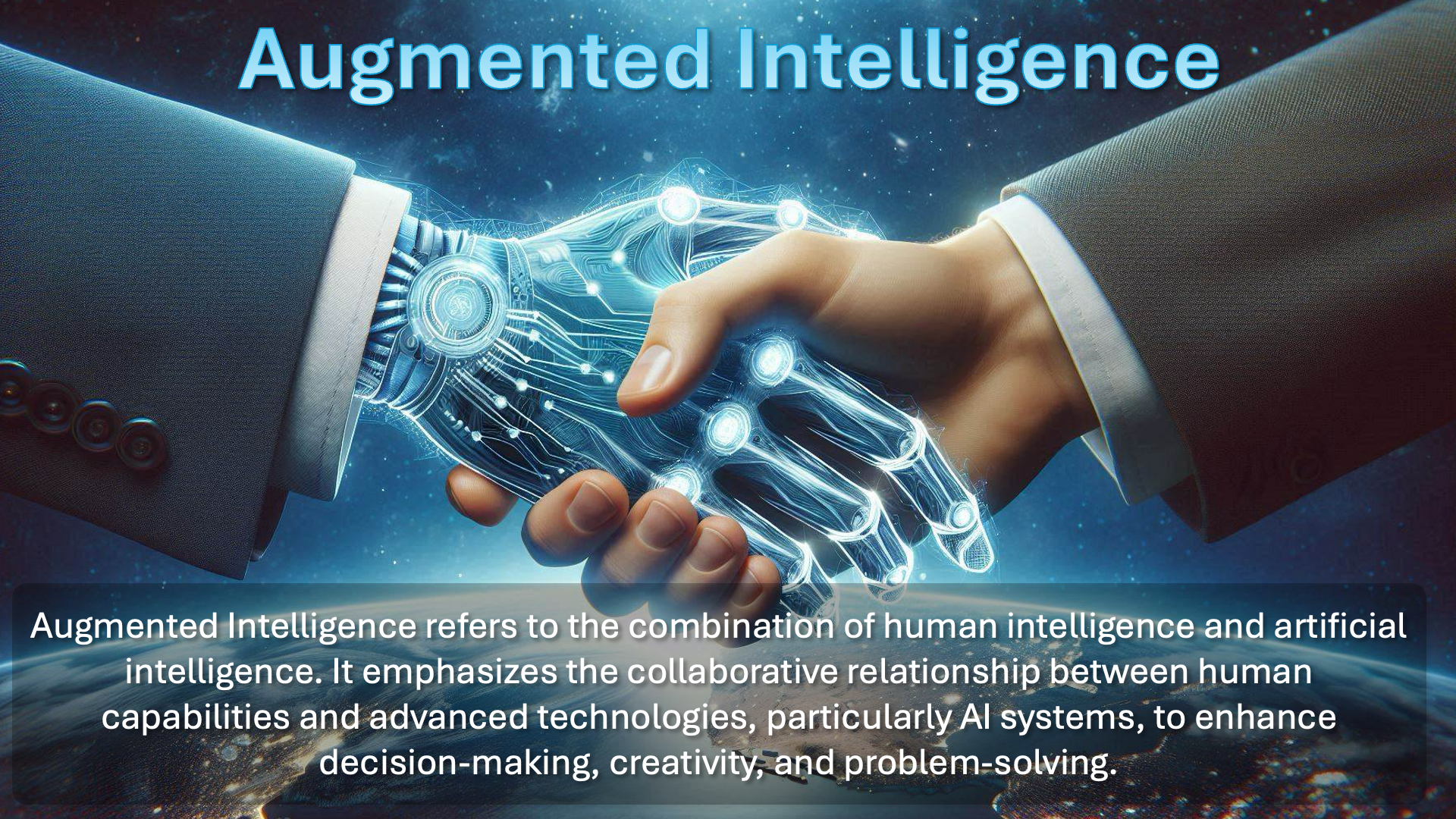Augmented Intelligence
Augmented Intelligence is a collaborative interaction of human and artificial intelligence aimed at enhancing cognitive performance, decision-making, and learning experiences.
What is Augmented Intelligence?
Augmented Intelligence refers to the combination of human intelligence and artificial intelligence. It emphasizes the collaborative relationship between human capabilities and advanced technologies, particularly AI systems, to enhance decision-making, creativity, and problem-solving.In contrast to traditional views of artificial intelligence, which often focus on machines replacing human jobs or functions, augmented intelligence aims to improve human performance by providing tools and insights that help individuals make better-informed choices.
Key aspects of Augmented Intelligence include:
- Collaboration: AI systems assist and empower humans rather than replace them, creating a partnership that leverages the strengths of both.
- Enhanced Decision Making: By analyzing vast amounts of data, AI can provide recommendations and insights that aid in the decision-making process.
- Improved Creativity: Tools powered by AI can help individuals explore new ideas, optimize processes, and stimulate innovation.
- User-Centric Design: Augmented intelligence systems are designed with the end-user in mind, ensuring that the technology complements human capabilities.
Overall, Augmented Intelligence represents a future where humans and machines work together harmoniously, leading to improved outcomes across various domains, including healthcare, business, education, and more.
Related:
- Human-Computer Collaboration
- Cognitive Computing Approaches
- Enhancing Decision-Making with AI
- Understanding Machine-Aided Intelligence
- The Future of AI and Human Synergy
- Augmented Decision Support Systems
- Blending AI with Human Expertise
- Transforming Industries through Augmented Intelligence
- Ethical Considerations in Augmented Intelligence
- Real-World Applications of Augmented Intelligence
External links:
-
- Augmented intelligence is a design pattern for a human-centered partnership model of people and artificial intelligence (AI) working together to enhance cognitive performance, including learning, decision making and new experiences.
-
- Augmented intelligence combined with human intelligence produces accurate data insights that lead to industry improvements, innovation, and better business outcomes.
- What is Augmented Intelligence? - IEEE Digital Reality — digitalreality.ieee.org
-
- Augmented Intelligence is the field of AI that enhances the capabilities and performance of humans, rather than replacing them, by using AI as a tool or a partner, such as in education or health care. Discover the definition, challenges, and potential of Augmented Intelligence in this article.
- What Is Augmented Intelligence? | Built In — builtin.com
- Augmented intelligence is a subset of AI that uses machine learning and deep learning to process data and assist humans in making data-driven decisions.
- What is Augmented Intelligence? - Augmentir — augmentir.com
- Augmented Intelligence is the use of artificial intelligence to enhance and improve human intelligence and decision-making.
-
- Will smart machines really replace human workers? Probably not. People and AI both bring different abilities and strengths to the table. The real question is: how can human intelligence work with artificial intelligence to produce augmented intelligence. Chess Grandmaster Garry Kasparov offers some unique insight here. After losing to IBM’s Deep Blue, he began to experiment how a computer helper changed players’ competitive advantage in high-level chess games. What he discovered was that having the best players and the best program was less a predictor of success than having a really good process. Put simply, “Weak human + machine + better process was superior to a strong computer alone and, more remarkably, superior to a strong human + machine + inferior process.” As leaders look at how to incorporate AI into their organizations, they’ll have to manage expectations as AI is introduced, invest in bringing teams together and perfecting processes, and refine their own leadership abilities.
